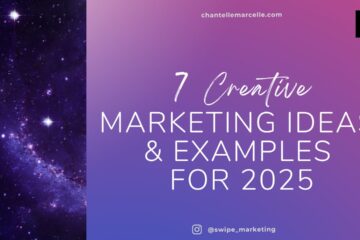
A Creative Event Marketing Case Study (or How an App Helped Me Stand Out at a Conference)
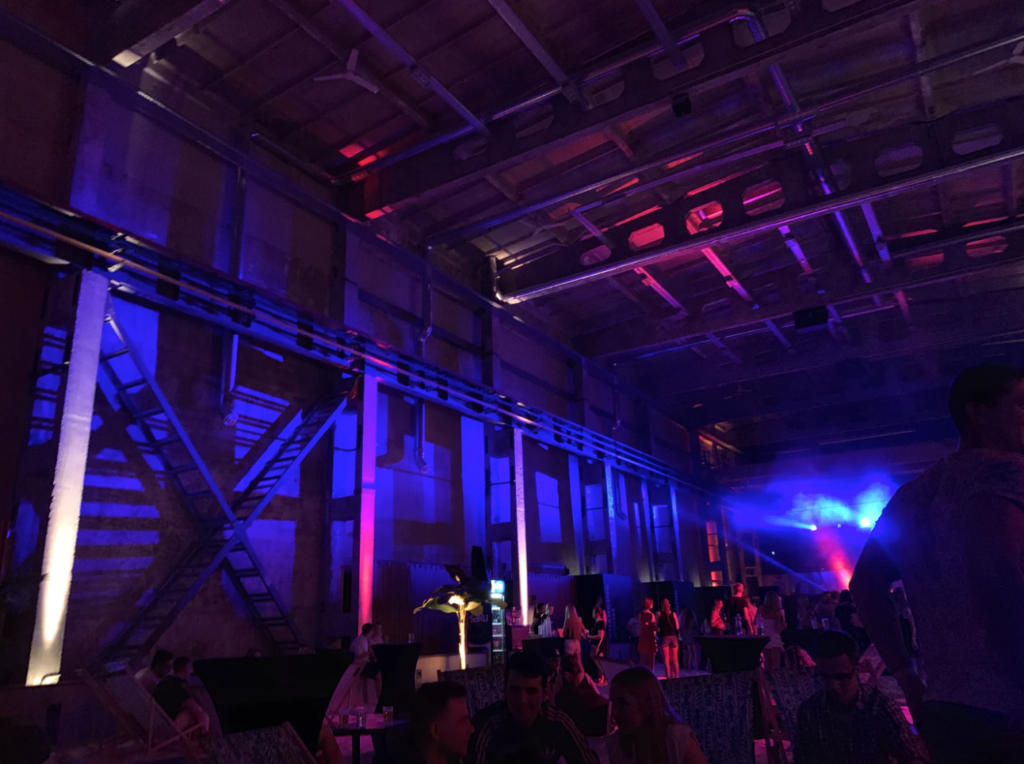
On the surface this is a straightforward case study about a creative event marketing idea involving an app that got results in the areas of brand awareness, relationship building, and even an actual deal.
But it’s also about the process.
- Getting buy-in for creative marketing ideas
- The challenges in getting the event marketing campaign teed up
- How you can put the (limited) resources you already have to good use
- Thinking through creation of an effective, memorable marketing campaign
- Measuring success of your marketing
Our Story Begins…

The year is 2016.
It’s a much simpler time, before much of the globe had ever even worn a surgical face mask among polite company.
I was managing marketing strategy for a hospitality technology company. It offered a SaaS platform for hotels to provide digital and mobile services as part of a better, more modern guest experience.
Every year there was one season in particular we all looked forward to and dreaded at the same time.
Tradeshow season.
Mandatory attendance at the self-proclaimed largest hospitality technology conference in the world.
In our industry, you had to be there in order to maintain your relevance.
And, as the company’s marketing lead, every year I stressed over rallying the entire company and project managing all the details of our participation.
It wasn’t my first time, but 2016 would be my last time attending with the company (a fact I didn’t know at the time).
In the Room Where It Happened

Every year I had the same discussion with the executives at our strategy meetings.
How can we make a (cost-effective) splash?
Can we stand out in a sea of booths and companies crowing about being the first or best to do this or that? How can we get the best bang for our buck?
I remember often finding myself standing at a dry erase board and jotting down whatever ideas the team blurted out.
We’d actually tried quite an impressive variety of event marketing stunts in the past several years since we’d made our debut.
- The “Silver Men” who were paid actors covered in silver spray paint providing photo opps and drawing traffic to our neck of the woods.
- A magician who put on quite a display of tricks.
- Lots of tchotchkes.
It was a delicate balance because you didn’t want to spend a ridiculous amount on event marketing.
Tracking the ROI of a tradeshow booth and the related investments into event marketing is a difficult venture.
For most industry events, the attendees are largely going to be the same group. Many are already customers. Many others are already in conversation with your sales team. If you have a long sales cycle, as we did, you often weren’t going to have anyone walk into the booth and want to sign a contract on spot, especially when there were multiple layers of decision makers to involve.
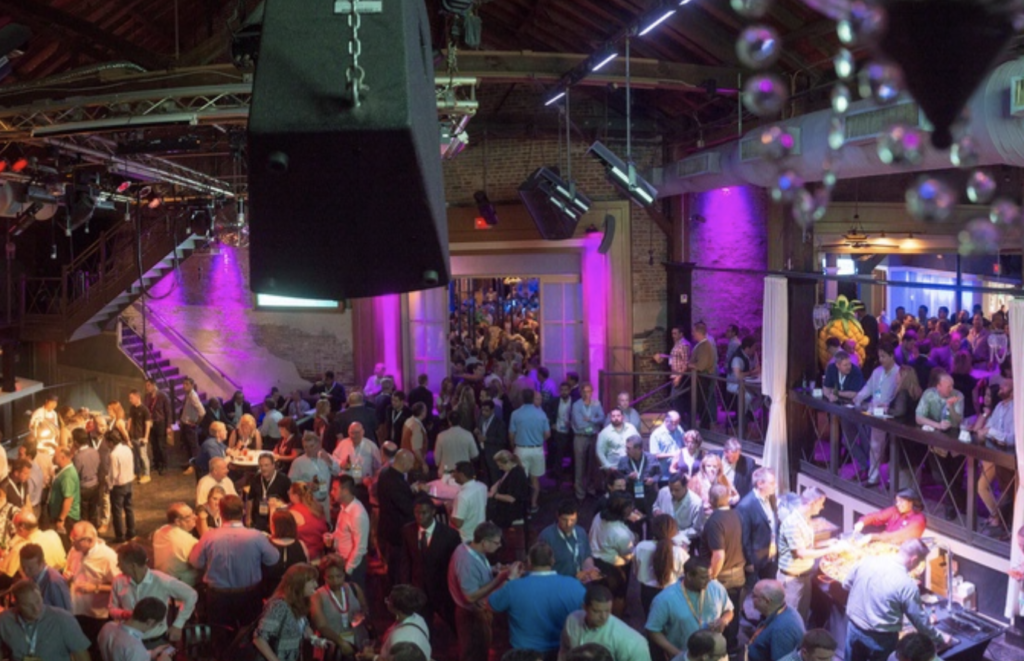
But this year I had an idea.
The Idea, the Pitch, the Pushback
“What if we did an event marketing app? Like an app for attendees that let them try out some of the features we offer through our actual customer apps.”
There were a few groans in response.
A one-time-use app?
Blah.
Apps were (and are) a dime a dozen.
The app stores for both iOS, Android and other mobile platforms are infamously bloated. You’re competing with every other brand, not to mention games and a wide assortment of the millions of other apps.
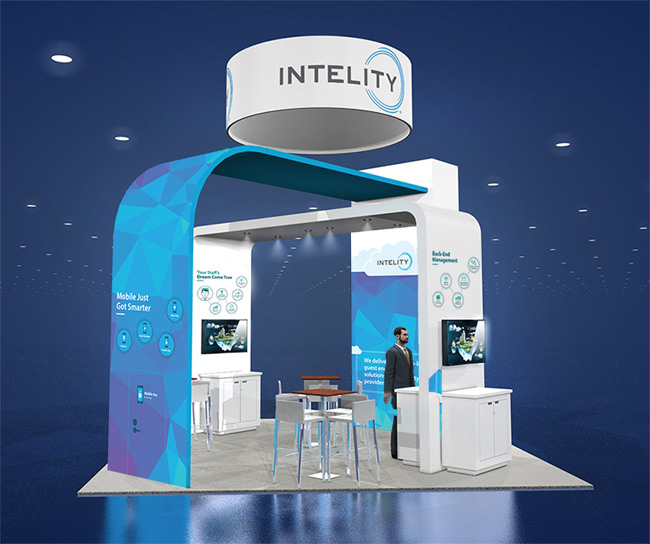
“Nearly 1 in 4 people abandon mobile apps after only one use,” warned a TechCrunch article from 2016.
But too many times the response to “Let’s try this” is “But there are already so many others doing it.”
There are a ton of other apps, as is the case with anything else in marketing, including webinars, white papers, e-books, etc. It’s certainly a competitive landscape for any marketing content.
To me, that just means you need to be strategic and focus on delivering major value with high-quality, consistent content.
And that’s about the gist of what I said to the team after the groans.
It wasn’t an easy push.
Every department already had a full plate, but delivering on the creative event marketing idea was going to take teamwork.
So I had to stick by the mentality of “work smarter, not harder.”
I also had to get resourceful and take on more of the lift myself if I wanted to get things done with a very limited (next to zero) budget.
The Essentials of a Successful Creative Event Marketing Campaign
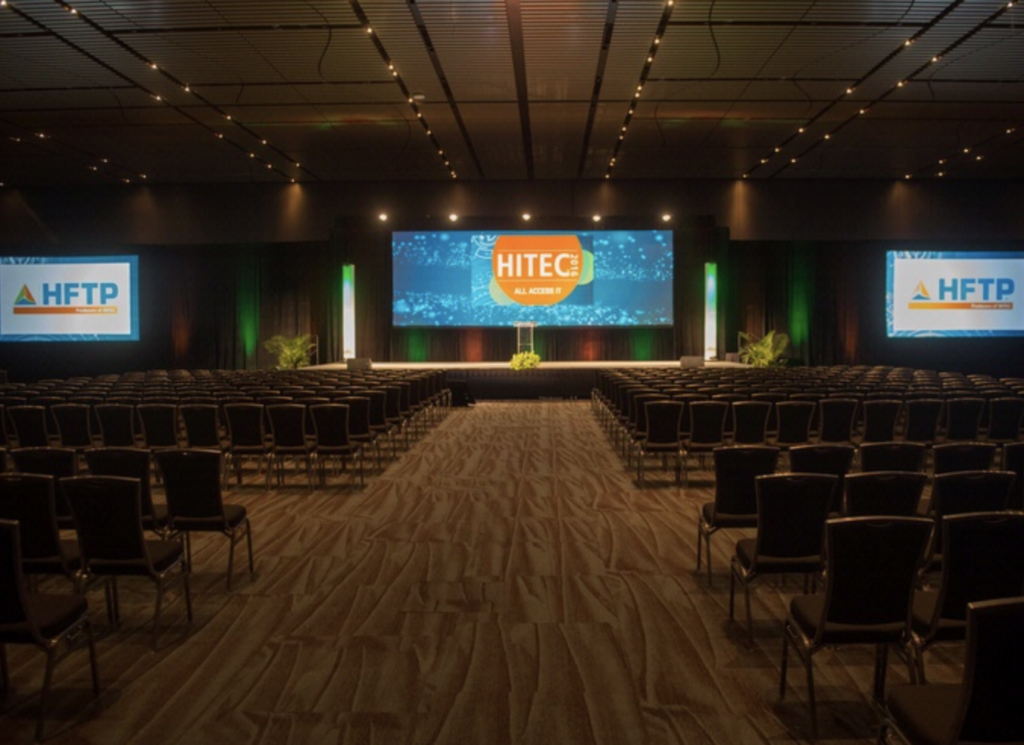
Here are some of the elements that were crucial to the success of this event marketing campaign (and the app):
1. Cross-Functional Support
The marketing team (we were a small team of about 4) would take on the brunt of the work. I would head up strategy and lean on our CX team on execution and project management.
As an aside, we had an amazing CX team. The Director of CX was so supportive, even if her team was already slammed with projects. I’ll always remember something she said. “Each of us in the company aren’t just serving our external customers. We’re also here to serve and support each other. We should think of our teammates as customers, too.”
I mention this to say:
Successful Marketing isn’t done in a silo.
Being able to successfully collaborate with other teams and rely on the wealth of knowledge they offer in other areas is so crucial to making a campaign more impactful.
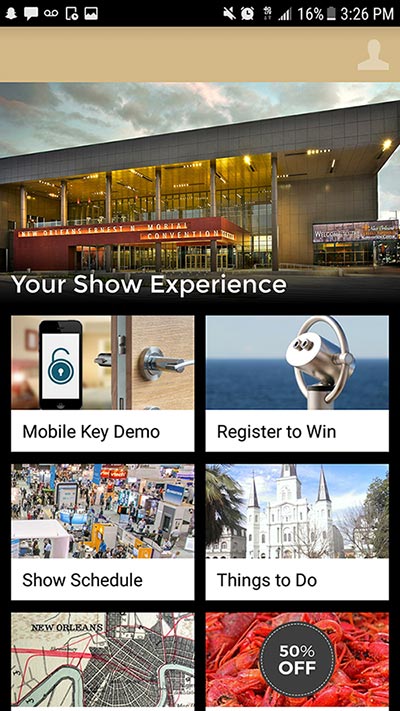
Can’t tell you how much I appreciated being able to rely on our Product & Development team to help me build out the shell of the app and submit to the App Store/Google Play store for approval. And the CX team for content management support. And my own Marketing team for tons of brainstorming sessions and extra work to meet deadlines.
2. Transparency Across the Organization
Great marketing ideas often start with marketing the idea itself.
Scratch that, almost all great ideas start with marketing the idea itself.
If you can’t get people on board with your mission, especially the people making decisions and allocating budget, you’re going to have a much more uphill battle.
In this case, I was starting at a disadvantage because the rest of the team was wary about what would be required of them and the eventual ROI.
Getting everyone else on board meant first sharing the plan in a very open and detailed way, and then taking in some of their feedback to let them feel like they were also a part of things.
It was also important to share photos and reviews from the actual event and end users of the app since not everyone in the company got to attend and interact directly with the users.
3. Project Management Outline and Checklist
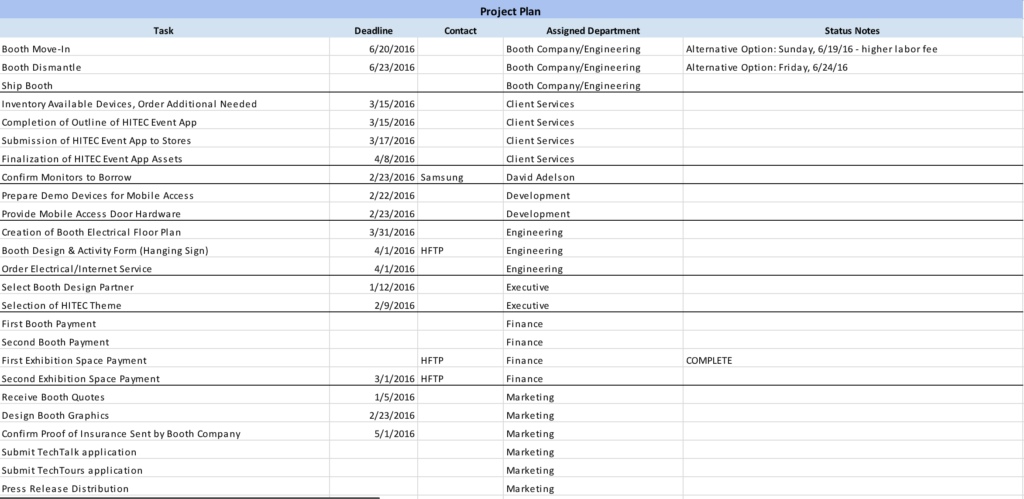
A lot of marketers are very good at coming up with brilliant ideas, but not so great at mapping out the execution in a detailed manner.
With so many people in the company involved in creating the app, I had to create a very thorough outline of responsibilities and timeline for deliverables. That allowed each member of the team to review and commit to their portion of the work.
That’s not to say the project management outline was in black and white.
There had to be room for a lot of flexibility where possible. And not going to lie, I had to do a lot of reminding and following up. That’s par for the course when you’re leading the completion of a marketing campaign or project.
4. A Lot of Creativity and Ingenuity
The main point of building out the app was to showcase some creative event marketing that would get attention.
I had a former boss tell me to brainstorm like I have all the money and resources in the world. That way there’s nothing dampening my creative spirit. The ideas flow more freely when you aren’t thinking to yourself, “Oh, better not get too creative. That’ll never happen.”
When you’ve fallen in love with an idea, you can start stretching your brain to get resourceful.
In this case that’s what I did.
The original inspiration for the app came from something I saw another company do at CES.
They developed an app for show attendees that (a) showcased some of the things the company’s products were capable of, and (b) served as a way of developing brand recognition and building relationships with attendees in the brand’s ICP.
Finding inspiration from others and figuring out how to translate brilliant marketing campaigns for your own company’s benefits gives you a leg up because you can learn from others and spin things to fit your own needs/style.
Reviewing the Event Marketing App Itself
Now let’s review some of the features of the actual event marketing app and what made it successful.

1. To help bring in a marketing budget, I offered real estate within the app to our partners and other companies that were attending the trade show. These companies could add their branding into the app for a fee. This included push notifications from those companies sent via the app about announcements they wanted to make to show attendees.
2. To get people to download the app, I knew there needed to be a compelling answer to WIIFM (what’s in it for me?). So I developed messaging around answering this question. I also focused on this question when deciding what content and features to include.
Some of the content included in the event app:
- Map of the convention center floor so people knew how to get around and where different booths were.
- Flight schedule at the local airport where app users could look up their flight information
- List of local attractions, shopping centers, and restaurants
- Schedule of things my company had planned to do in the booth
- Schedule of social events and parties affiliated with the conference or other exhibitors
3. People at a conference might not have time to do much sightseeing after being at a conference all day, plus the evening social events.
But one thing I knew they would need to do was eat.
With that in mind, I cold called almost every restaurant owner/manager around the convention center where the conference would take place. I told them in exchange for offering a discount of some sort to app users, I’d put their business in the app, where they would be seen by the thousands of attendees. And I was able to get 3 or 4 different restaurants to agree.
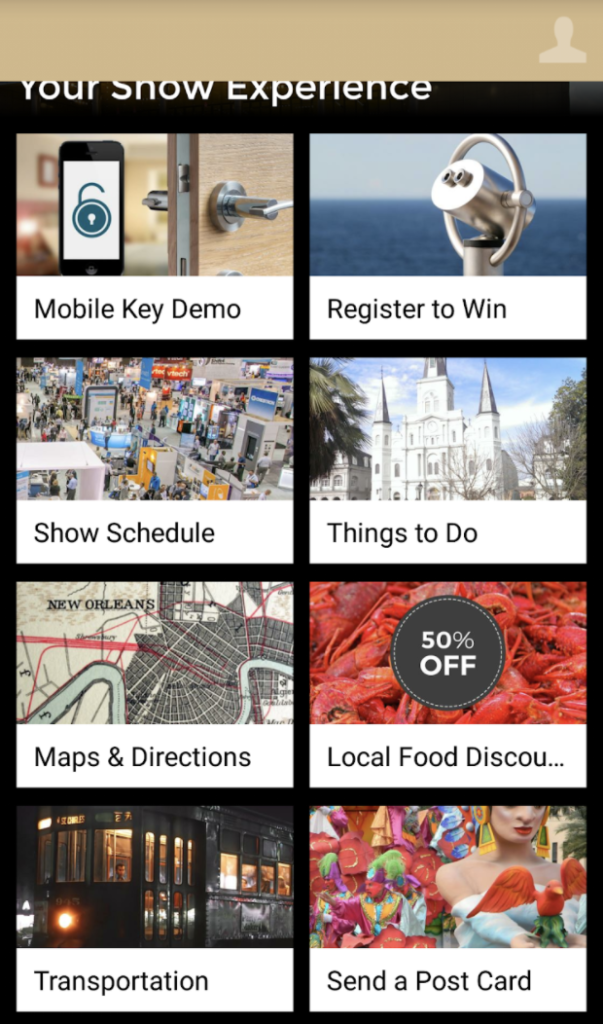
4. A lot of exhibitors will offer a giveaway. I wanted to not only have a great giveaway, but also find a way to incorporate that into the app.
We ended up giving away a GoPro and a tablet, but to register to win, you had to submit through the app itself.
This turned out to be one of the better ideas because it not only incentivized downloading the app, it also gave us some visibility into who actually did download. Several notable industry executives and decision-makers actually appeared among the names of those who registered to win.
Measuring Success of Creative Event Marketing
When examining the full costs and everything put into the event and the app, the number was pretty incredible. It’s amazing how fast costs add up, although the bulk of expenditures around a trade show or event are going to be related to the logistical pieces.
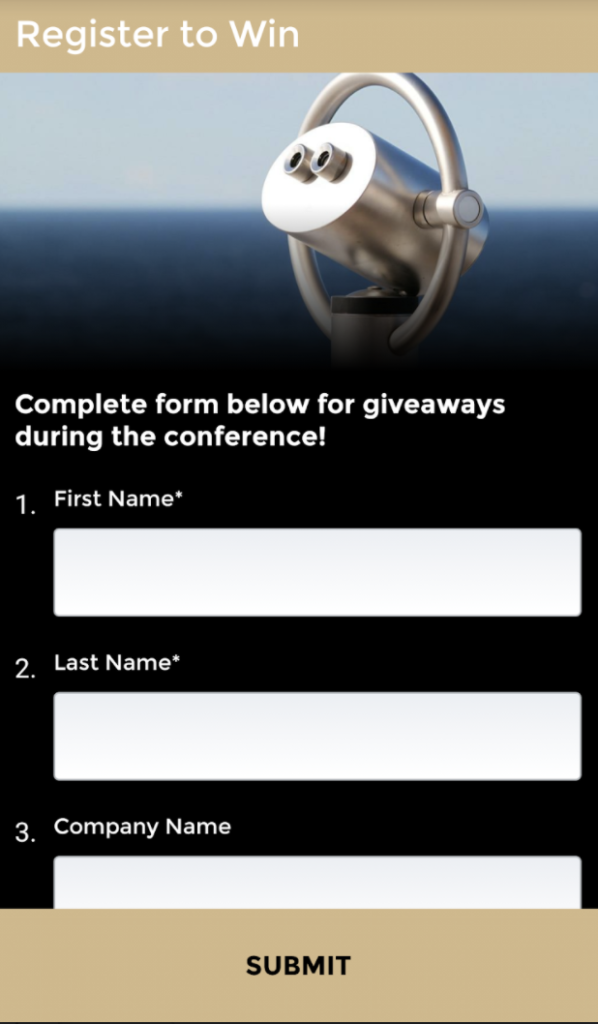
Travel and operations. All the charges incurred through the convention center expenses, like booth WiFi, clean up, shipping and storage, etc.
Yup, even a waste basket for the booth is going to cost you.
But when you don’t have contracts signed at the actual event, drawing a direct line from revenue to the event marketing efforts can be tough.
Tallying up all the foot traffic through the booth is usually a primary metric that’s discussed to help measure reach and awareness. It doesn’t necessarily paint a good picture of the event ROI, though, because plenty of people go through a booth and aren’t a prospective buyer. They just want a branded pen or to drop their business card in a fish bowl for a raffle.
A certain degree of measuring success of event marketing is intuitive.
Listening to customer and prospect conversations and how many times your event presence or marketing efforts are mentioned. This includes monitoring social media buzz.
It was a conversation that revealed how successful the event marketing app we built was.
A few months down the line, the CEO pulled me aside to give me an update.
Apparently a decision maker from a large hospitality brand used the app and liked it so much, they reached out to ask us to create a re-branded version with many of the same features for another conference they would be hosting.
How’s that for a direct measure of ROI?
For more creative event marketing ideas and case studies, add me on LinkedIn or tweet me!
You can also sign up for my newsletter and get my content (plus other insight) delivered to you weekly.


